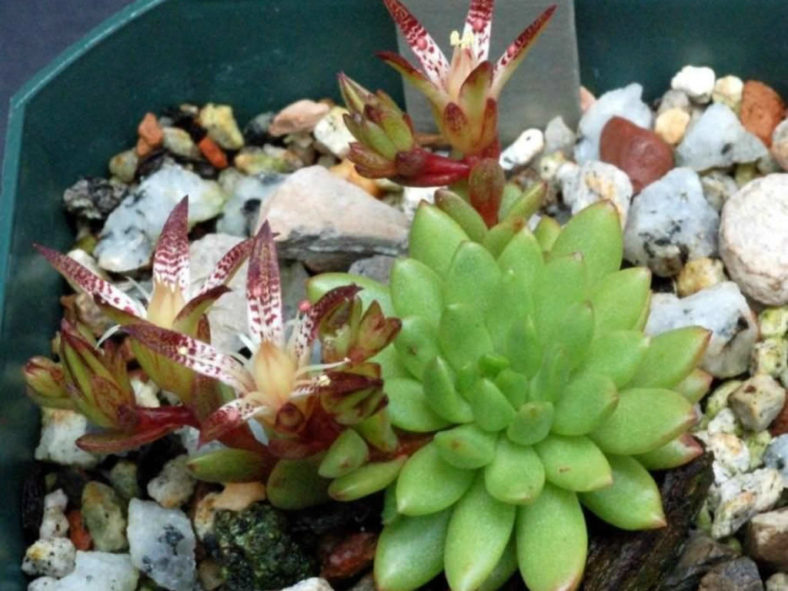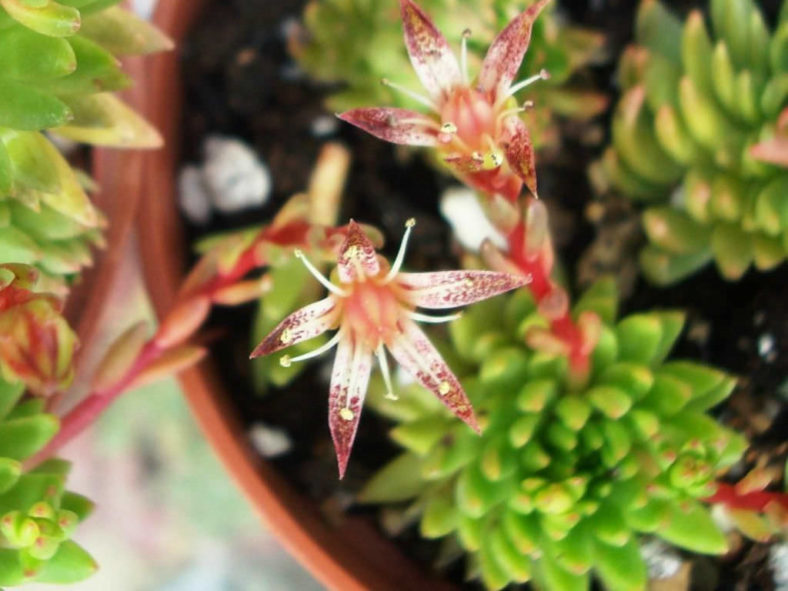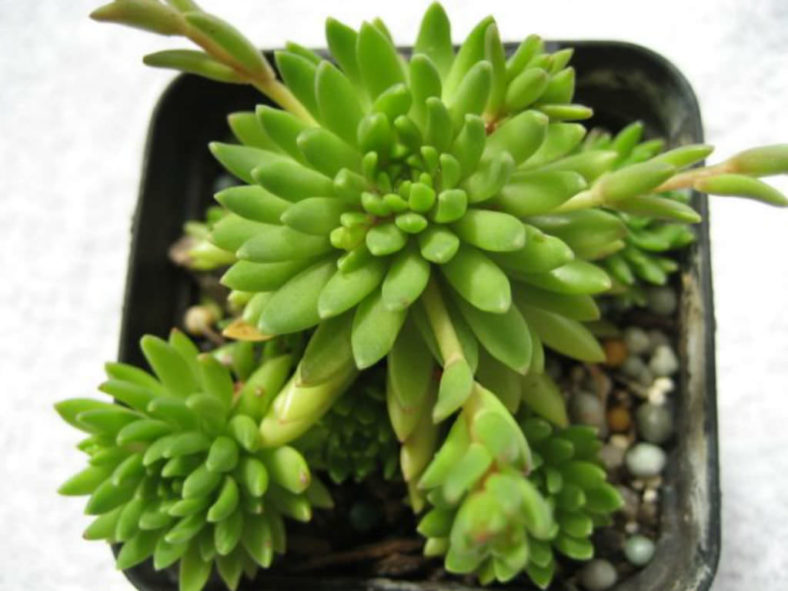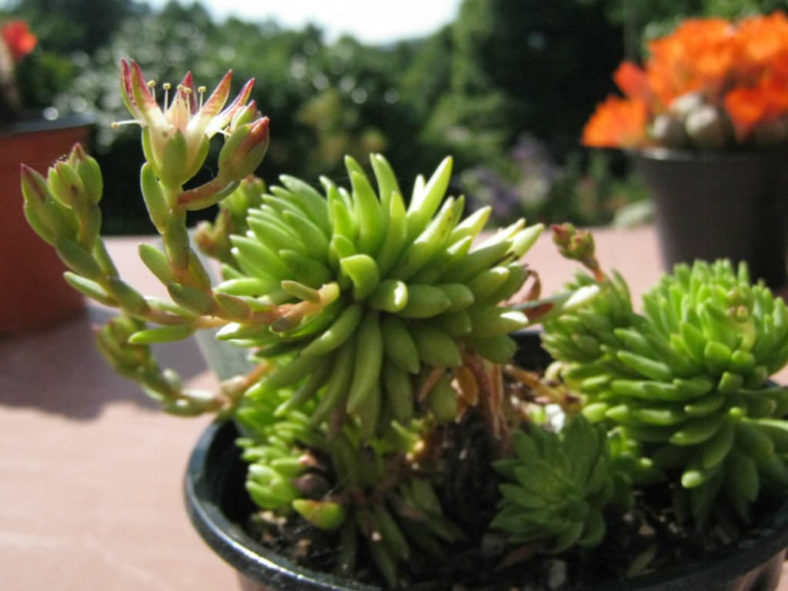Scientific Name
Graptopetalum saxifragoides Kimnach
Synonym(s)
Graptopetalum saxifragoides var. saxifragoides
Scientific Classification
Family: Crassulaceae
Subfamily: Sedoideae
Tribe: Sedeae
Subtribe: Sedinae
Genus: Graptopetalum
Description
Graptopetalum saxifragoides is a small succulent that forms mats of dense rosettes of thick pale green or completely reddish leaves. The rosettes can reach up to 1.6 inches (4 cm) in diameter, and the leaves can grow up to 0.6 inches (1.5 cm) long and 0.2 inches (0.5 cm) wide.
The flowers are creamy-white to yellowish and patterned with brownish violet. They are 5-petaled and can reach 1 inch (2.5 cm) in diameter.

Hardiness
USDA hardiness zones 9b to 11b: from 25 °F (−3.9 °C) to 50 °F (+10 °C).
How to Grow and Care
The rules for Graptopetalum care are similar to those for most succulents. All require lots of sunlight to look their best. They also require gritty, porous soil with excellent drainage. Water regularly over summer and let the soil dry out between waterings. Minimal water is required over winter. Overwatering causes root rots, and the plant can get several pest infestations. Fertilize once during the growing season with a balanced fertilizer diluted to 1/4 strength.
Graptopetalums are generally easily propagated by seeds, leaf cuttings, or offsets. Any rosette that breaks off has the potential to root and start a new plant. Even a leaf that drops off will quickly root below the parent plant and produce a new rosette. The new plant feeds off the leaf until it shrivels and falls off. By then, the new little plant had rooted and sprouted new leaves.
Learn more at How to Grow and Care for Graptopetalum.
Origin
Graptopetalum saxifragoides is native to Mexico.
Hybrids
Links
- Back to genus Graptopetalum
- Succupedia: Browse succulents by Scientific Name, Common Name, Genus, Family, USDA Hardiness Zone, Origin, or cacti by Genus
Photo Gallery
Click on a photo to see a larger version.



